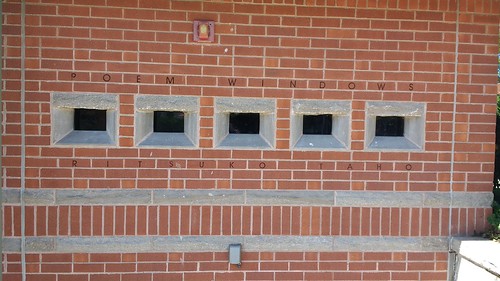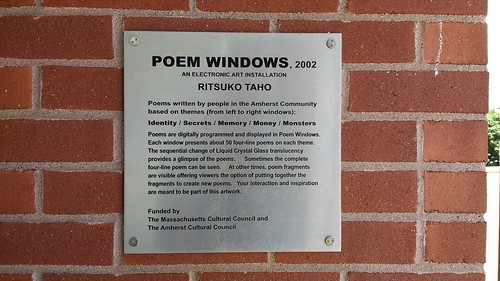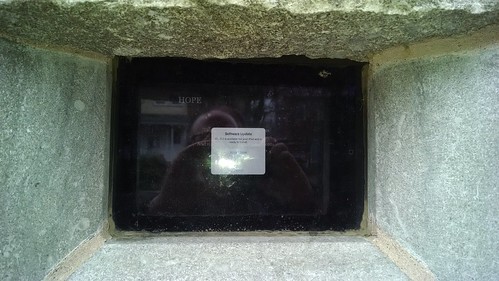Early in the fall, I got a call from someone in Facilities Planning to let me know that the campus was developing some kind of Makerspace project. It was kept under wraps until quite recently when a Makerspace Charette was announced. There were nearly 100 people that came: the usual suspects, but also a lot of new faces I hadn't seen before. The first hour was spent mostly with presentations from the administration, explaining the process and the context.
It turns out that, with the new Design Building, there is space in the Fine Arts Center Bridge that will become available to be repurposed and renovated. And there is money already in hand to do the renovations. The administration has heard of Makerspaces and wants to see if they can build one here. And to show how serious they are, they've hired a consultant: Cambridge 7 Associates.
C7A showed fancy new makerspaces at some of our peer institutions and also some really appalling examples of what some people build and call a "Makerspace". I thought they did three good things: One was to show what not to build, like a break room with some "electrical circuits" (extension cords, but he called them "electrical circuits") hanging from the ceiling. The second good thing was to make clear that the "build it and they will come" model is wrong headed. (Although, to be honest, this whole project sounds a whole lot like that). The recommendation of C7A was a "hub": something that can complement existing makerspaces. But they also pointed out (rightly, I thought) that the makerspace shouldn't be necessarily in the center of campus -- or necessarily even on campus. It should be peripheral -- or even off campus -- with the goal of being a place where people from on campus and off campus could meet and mingle. Which is, of course, exactly what we've been trying to do with Makers at Amherst Media for five years. Sigh...
After that there were a bunch more presentations from some of the makerspace leaders on campus: mostly engineering (M5, Innovation Shop, Queer Lights) but also from the library and the new entrepreneurship program.
As the presentations wound down, there were a number of occupants of the building who had only just learned that the charette was happening. They spoke up to mention their space issues and hopes that some of this space could be available for their needs.
It sounded like originally the organizers of the charette had planned for us to be sorted into particular kinds of groups as a breakout. As time was growing short, however, they just had people assort randomly, more or less, and take a few minutes to discuss. My table had a variety of interesting people: some people from art, engineering, library, and other places on and off campus. I agreed to be the "recorder" (mainly so that we weren't making a "girl" do it). These were our conclusions:
First, the process is completely backwards. We ought to be thinking about how to use the Maker movement and principles to transform pedagogy and the student experience on campus, where appropriate. And only then to think about how the financial, physical, and human resources on campus could be best deployed to support that mission. It's perhaps understandable, given that the money and space are available and that the funds can only be used on campus that people might ask the question this way. But it seemed that everyone agreed it was the wrong way to do it.
I learned that the UTAC committee is talking about coordinating with Amherstworks to develop a Makerspace. This was news to me. But, of course, everyone is trying to build a Makerspace everywhere.
In fact there are already makerspaces all over campus and all of them need resources to make them work better. A big challenge is that what makes makerspaces work is people with the right skill set -- that bridges technology and pedagogy -- with enough time in their portfolio to support a makerspace. This is especially true if we want to make makerspaces more accessible (to have a hub that can tie together all the satellites). But the largest challenges are perhaps the institutional barriers that make it difficult to collaborate across University boundaries and divisions.
In spite of the number of makerspaces, there are still big campus gaps. There is no campus space doing anything with virtual reality, for example.
And finally, our group offered a couple of practical tips: if building makerspaces in this space, one needs to think through the adjacencies of which kind of space can coexist with others -- and which can't. And to be sensitive to issues of gender and inclusion, as some kinds of makerspaces are almost entirely male while others are mostly female.
After the groups reported out, we were thanked for our contributions and dismissed. After the meeting, I have no ability to predict what affect, if any, our comments will have on the process.










